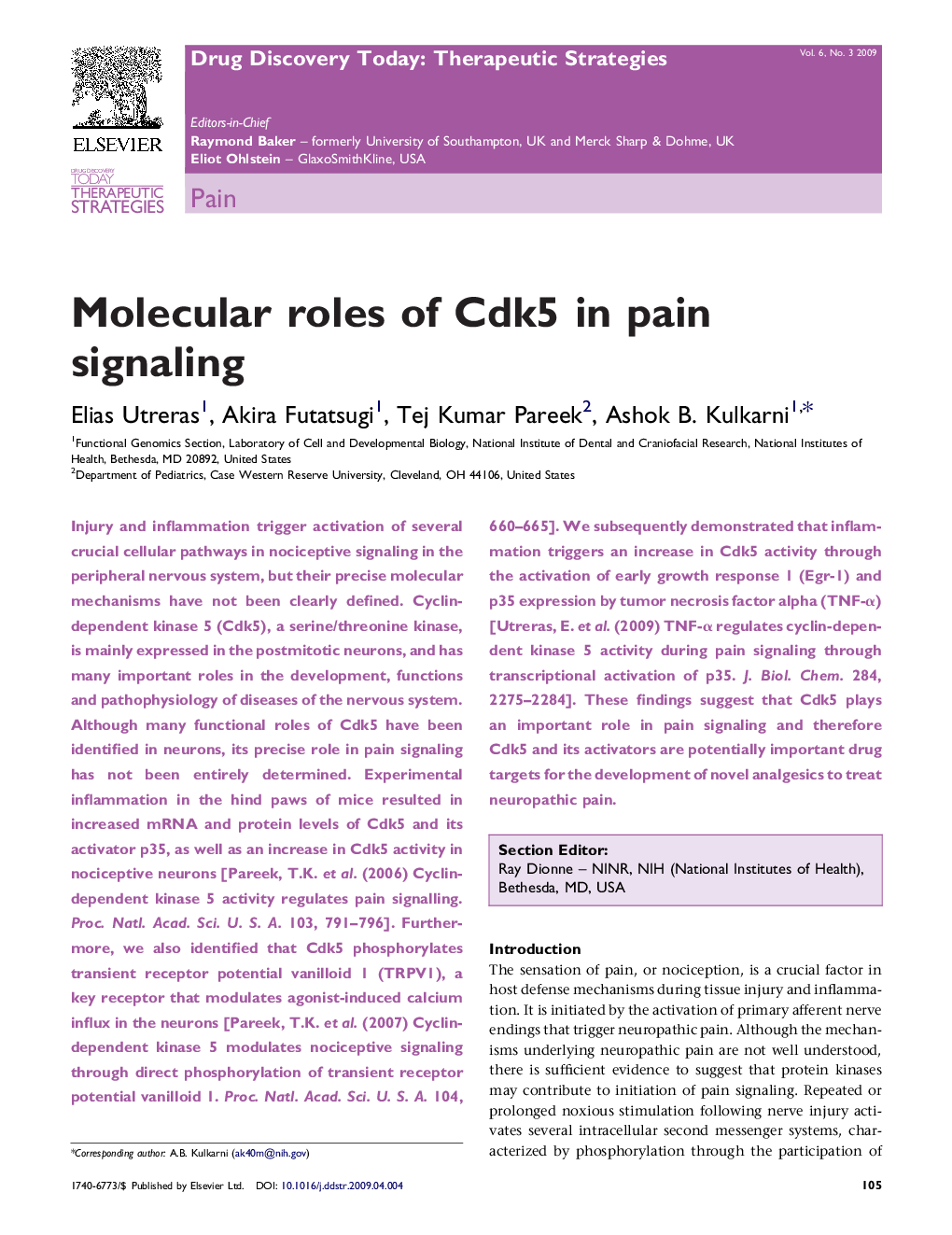| Article ID | Journal | Published Year | Pages | File Type |
|---|---|---|---|---|
| 2082935 | Drug Discovery Today: Therapeutic Strategies | 2009 | 7 Pages |
Injury and inflammation trigger activation of several crucial cellular pathways in nociceptive signaling in the peripheral nervous system, but their precise molecular mechanisms have not been clearly defined. Cyclin-dependent kinase 5 (Cdk5), a serine/threonine kinase, is mainly expressed in the postmitotic neurons, and has many important roles in the development, functions and pathophysiology of diseases of the nervous system. Although many functional roles of Cdk5 have been identified in neurons, its precise role in pain signaling has not been entirely determined. Experimental inflammation in the hind paws of mice resulted in increased mRNA and protein levels of Cdk5 and its activator p35, as well as an increase in Cdk5 activity in nociceptive neurons [Pareek, T.K. et al. (2006) Cyclin-dependent kinase 5 activity regulates pain signalling. Proc. Natl. Acad. Sci. U. S. A. 103, 791–796]. Furthermore, we also identified that Cdk5 phosphorylates transient receptor potential vanilloid 1 (TRPV1), a key receptor that modulates agonist-induced calcium influx in the neurons [Pareek, T.K. et al. (2007) Cyclin-dependent kinase 5 modulates nociceptive signaling through direct phosphorylation of transient receptor potential vanilloid 1. Proc. Natl. Acad. Sci. U. S. A. 104, 660–665]. We subsequently demonstrated that inflammation triggers an increase in Cdk5 activity through the activation of early growth response 1 (Egr-1) and p35 expression by tumor necrosis factor alpha (TNF-α) [Utreras, E. et al. (2009) TNF-α regulates cyclin-dependent kinase 5 activity during pain signaling through transcriptional activation of p35. J. Biol. Chem. 284, 2275–2284]. These findings suggest that Cdk5 plays an important role in pain signaling and therefore Cdk5 and its activators are potentially important drug targets for the development of novel analgesics to treat neuropathic pain.
Section Editor:Ray Dionne – NINR, NIH (National Institutes of Health), Bethesda, MD, USA
